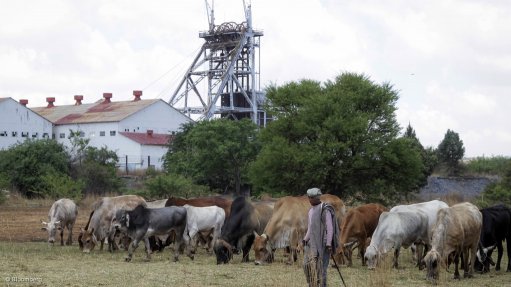
RECLAIMED BY NATURE The new, stricter regulations are likely owing to the Department of Mineral Resources being responsible for the rehabilitation close to 6 000 abandoned mines
Mining consultancy The MSA Group is liaising with various industry players including mining companies, insurers, law and auditing firms to establish a consistent approach to assessing and reviewing mine closure liability. The company believes that this collaboration will result in greater understanding of the process by all parties and, through this, the streamlining of efforts and, therefore, reduce costs to mining companies.
MSA senior environmental project manager Stephan Herb says the consultancy is in the process of developing a methodology that is aligned with the local legislative framework and industry good practice that can be replicated regardless of the commodity and mining method.
There is currently no consistent, agreed-upon approach to rehabilitation or closure, which presents challenges to mining companies as well as the Department of Mineral Resources (DMR). “How can the DMR determine if the mine’s action is reasonable and adequate when there is no benchmark to which that action can be measured?” asks Herb.
While the individualised approach to implementing closure and rehabilitation plans is not inherently flawed, Herb and MSA believe that closure and rehabilitation processes can be streamlined and simplified.
Herb says confusion regarding legislation is one of the major concerns for the mining industry. While there has been a push by government to move towards “one environmental system” – under the auspices of the National Environmental Management Act (Nema) – there is still a “web” of legislation that mines have to navigate.
He notes that the conventional approach to closure and rehabilitation is largely based on assumptions or incomplete data. For example, one of the biggest concerns is the latent residual risks pertaining to groundwater and, to adequately address environmental harm, mines that share a water basin should share information on how their activities impact on the basin, adds Herb.
“The movement of water doesn’t adhere to the boundaries determined by individual mining rights,” and companies could, therefore, benefit from collating information by, firstly, understanding the entirety of the potential liability, and secondly, pooling their resources to formulate a solution to address the situation, Herb explains.
“Mines within a water basin can contribute to the establishment of one water treatment facility instead of each mine constructing its own treatment plant, at an exhaustive cost.”
He also suggests that mines and vested parties – such as mining communities or insurers – use technology to establish a database and, perhaps, a program that uses actuarial software to “inform the closure and rehabilitation process”. This database, Herb points out, could expand on the proposed guideline, as it would use similar data and case studies.
Herb states that a guideline that considers all the relevant legislation and leverages information compiled by experts in their field could be vital to industry.
Hindrances
One of the major hindrances to the closure and rehabilitation processes is legislative uncertainty. Multiple legal challenges, as well as numerous amendments, have led to uncertainty regarding the validity of certain legislation, and confusion surrounding the legal obligation to comply with impending regulations.
For example, with regard to compliance, Herb highlights the amendments to the Regulations for Financial Provisions for Prospecting, Exploration, Mining and Production Operations, which were published for comment last year. The regulations were first promulgated by Environmental Affairs Minster Dr Edna Molewa in November 2015, although the process to finalise these amendments is ongoing.
Herb points out that legislative uncertainty has resulted in mining companies with existing mining rights adopting a “wait-and-see” approach. “With existing holders are expected to comply with the regulations by February 2019 – as opposed to the mining right applicants, which need to comply to obtain a right – they are reluctant to change their financing structure, as the regulations may change before the 2019 deadline.”
Yet, despite the adverse coverage on these regulations, he applauds the intentions that led to its drafting and believes that some of the pitfalls can be addressed in the amendment process.
Concurrent Rehabilitation Advised
Herb explains that the mindset around closure needs to change, as mining companies also need to become more proactive: “Most companies think of rehabilitation and closure only once an operation’s life-of-mine (LoM) is nearing its end. Companies should instead integrate their closure plan with their LoM plan and, where possible, practise concurrent rehabilitation.”
Aside from complying with the regulations (in their current form), it makes financial sense to “clean up as you go”, as this has positive implications in terms of actively managing the risk, as well as cash flow, he says. Companies, Herb notes, should consider rehabilitation in the same way they consider maintenance: concurrent rehabilitation actively manages the associated risks and financial liability, similar to preventive maintenance by reducing the risk of a major system failure – and associated costs – at a later stage.
Herb recommends that mines begin to incorporate closure planning into the mine plan and not consider closure assessments a case of mere compliance but rather as a mechanism of value creation. “MSA has done many due diligence assessments for the sale of mines and, oftentimes, the costs associated with closure can affect the value of the project.”